AI detection tools have become a land mine of false accusations, threatening the professional and academic reputations of innocent writers across various domains. These flawed technological solutions are creating more harm than good, with shocking accuracy rates that raise serious questions about their reliability and potential for causing widespread damage.
Key Takeaways:
- AI detection tools demonstrate alarming false positive rates between 20-30%, falsely flagging human-written content
- Specialized terminology, individual writing styles, and linguistic diversity significantly impact detection accuracy
- Academic and professional environments risk unfairly penalizing individuals based on unreliable technological assessments
- Detection tools disproportionately impact non-native English speakers and writers with unique expression patterns
- Future content verification requires multi-modal analysis and transparent, probabilistic assessment methods
The Shocking Truth About AI Detection Accuracy
When AI Detectors Get It Wrong
AI detection tools don’t work nearly as well as you’ve been led to believe. The stats paint a concerning picture of just how often innocent writers get falsely accused.
The Weber-Wulff research dropped a bombshell when it evaluated popular AI detection tools, finding false positive rates of 20-30% across various platforms. That means if you’re submitting 100% human-written content, you still face a 1-in-4 chance of being wrongly labeled as using AI.
Even the better-performing tools like Originality.AI show concerning limitations:
- 91.3% accuracy when detecting pure GPT-4 text
- Plummets to just 27.8% accuracy after basic anti-detection processing
- Overall average accuracy of 39.5% across various content types and conditions
I’ve seen careers nearly derailed by these false accusations. The truth is, these tools are closer to educated guesswork than reliable detection systems. The Search Logistics case study confirms what many have experienced – AI detection remains more art than science.
Under the Hood: Why AI Detection Tools Fail
AI detection tools promised to save academic integrity, but they’re falling short in spectacular fashion. These systems operate on fundamentally flawed assumptions about how language works.
Fundamental Technical Shortcomings
Current detection algorithms rely mainly on pattern matching and probability calculations. They look for statistical similarities to known AI outputs rather than truly understanding content. This leads to several critical failures:
- False positives occur because humans naturally use common phrases and structures
- Detection accuracy plummets when text includes specialized terminology
- Simple edits like paraphrasing can completely fool these systems
As shown in the SearchLogistics study, even the best detectors struggle to accurately identify AI content that’s been lightly edited.
The Human Factor Problem
These tools make dangerous assumptions about what “human writing” should look like. They fail to account for:
- Individual writing styles that may naturally resemble AI patterns
- Non-native English speakers whose syntax might trigger false positives
- Neurodivergent writers with unique expression patterns
The LWW Journal study found detection tools flagged human-written scientific papers as AI-generated at alarming rates.

Academic Battleground: Reputations at Risk
I’ve watched universities scramble to address AI in student work, often with more panic than precision. The results? Innocent students facing harsh penalties based on flawed detection systems.
Cambridge University made headlines when they flat-out rejected Turnitin’s AI detection feature, citing concerns about accuracy and reliability. Their decision wasn’t just cautious—it was prescient.
False Accusations and Biased Results
The Texas A&M incident stands as a cautionary tale. A professor accused an entire class of using ChatGPT on their finals, only to backtrack after public outcry and university intervention. Students faced potential academic dishonesty charges based solely on an AI detector’s verdict.
The damage extends beyond reputation. Students who speak English as a second language face disproportionate risks, with false positive rates 2-3 times higher than native speakers. This linguistic bias creates an uneven playing field where certain students face:
- Higher likelihood of false flagging
- Additional scrutiny and burden of proof
- Potential academic penalties despite original work
- Psychological stress from defending their integrity
“The current detection tools function more like anxiety generators than accurate systems,” notes one study from Compilatio, highlighting that even their own tools struggle with reliability.
For students balancing academic pressures while navigating these flawed systems, the consequences can derail careers. As AI detection accuracy issues continue to surface, institutions must prioritize student protection over technological shortcuts to academic integrity enforcement.

Professional Fallout: When Detection Goes Wrong
AI detection tools have created real casualties in the professional world. I’ve seen the damage firsthand when these flawed systems wrongly flag human work as machine-generated.
Career Casualties of False Positives
Freelance writers have particularly felt the sting of false accusations. Gizmodo reported multiple cases where writers lost steady income streams after clients’ AI detection tools incorrectly flagged their work. One writer shared how she lost a $2,000 monthly contract when her client’s detection tool labeled her meticulously researched article as AI-generated with “97% confidence.”
These incidents aren’t isolated. Writers face an impossible burden of proof when accused – how do you prove you didn’t use AI? The lack of transparent appeal mechanisms compounds the problem, leaving wrongly accused professionals with no recourse.
Legal and Ethical Quicksand
Companies making hiring and firing decisions based on unreliable detection tools are stepping into dangerous territory. Consider these concerning implications:
- Employment decisions based on flawed technology could violate labor laws
- False accusations damage professional reputations that took years to build
- Writers now face anxiety about using certain phrases that might trigger false positives
- Small businesses lose trusted talent due to misplaced technological faith
The rush to implement workplace AI policies without understanding detection limitations creates a hostile environment for creative professionals. As I’ve previously discussed, these detection tools simply aren’t reliable enough for high-stakes professional decisions.
The solution isn’t more detection – it’s better communication about expectations and reasonable skepticism about technological claims that seem too good to be true.
Emerging Solutions and Strategies
Beyond Binary Detection: Smarter Approaches
Digital watermarking has emerged as a promising alternative to flawed detection tools. Unlike traditional detection methods that analyze text patterns, watermarking embeds subtle markers directly into AI-generated content, creating a verifiable trail of origin without false accusations.
Hybrid evaluation methods are gaining traction as well. These combine automated checks with human review, acknowledging that neither can be perfect alone. This balance helps catch true AI misuse while protecting innocent content creators.
Many organizations are shifting away from detection-obsessed approaches toward quality assessment frameworks. This pivot focuses on content value rather than origin – a much healthier perspective for both creators and audiences.
For those navigating this tricky landscape, I recommend these practical steps:
- Treat detection tools as just one data point among many, never as the final verdict
- Create transparent AI usage policies that specify when and how AI assistance is appropriate
- Establish fair appeal processes for those who believe they’ve been wrongly flagged
- Focus on content quality metrics that matter regardless of how content is created
The most progressive institutions now employ multiple evaluation methods simultaneously, creating a more nuanced picture than any single detection tool can provide. This layered approach reduces false positives while still identifying genuine policy violations.
The smartest path forward isn’t about catching AI users – it’s about fostering environments where both human and AI-assisted creation can thrive ethically. As detection tools mature, this balanced strategy will become increasingly important for avoiding the pitfalls of AI detection failures.

Future of AI Content Verification
The detection landscape isn’t static – it’s rapidly changing as researchers scramble to develop more reliable AI identification methods. Current tools remind me of early spam filters that would flag legitimate emails while letting obvious scams through the cracks.
The Human-AI Partnership
Technology alone can’t solve this problem. The future of content verification will depend on a hybrid approach:
- Multi-modal analysis – Using several detection methods in combination rather than relying on a single flawed tool
- Contextual verification – Looking at the content’s history, creation process, and metadata
- Probabilistic assessment – Moving away from binary “human/AI” labels to confidence scores
- Transparent algorithms – Detection systems that explain their reasoning instead of mysterious black boxes
I’ve noticed institutions adopting more nuanced approaches. Some universities now require human assessment alongside detection tools before making accusations.
The most promising development? AI creators building verifiable watermarks and authentication systems directly into generation tools. This approach shifts the burden from detection to provenance – knowing where content originated rather than guessing after the fact.
For anyone concerned about unfair AI accusations today, I’d suggest keeping detailed records of your creative process. Documentation showing your work evolution provides powerful evidence against false claims that technology created your content. As I explain in my article “Your AI Content is Hurting Your Credibility,” authenticity matters more than ever in establishing trust.

Sources:
– Weber-Wulff et al.
– Gizmodo
– Cambridge University
– Texas A&M
– Originality.AI
– Turnitin








